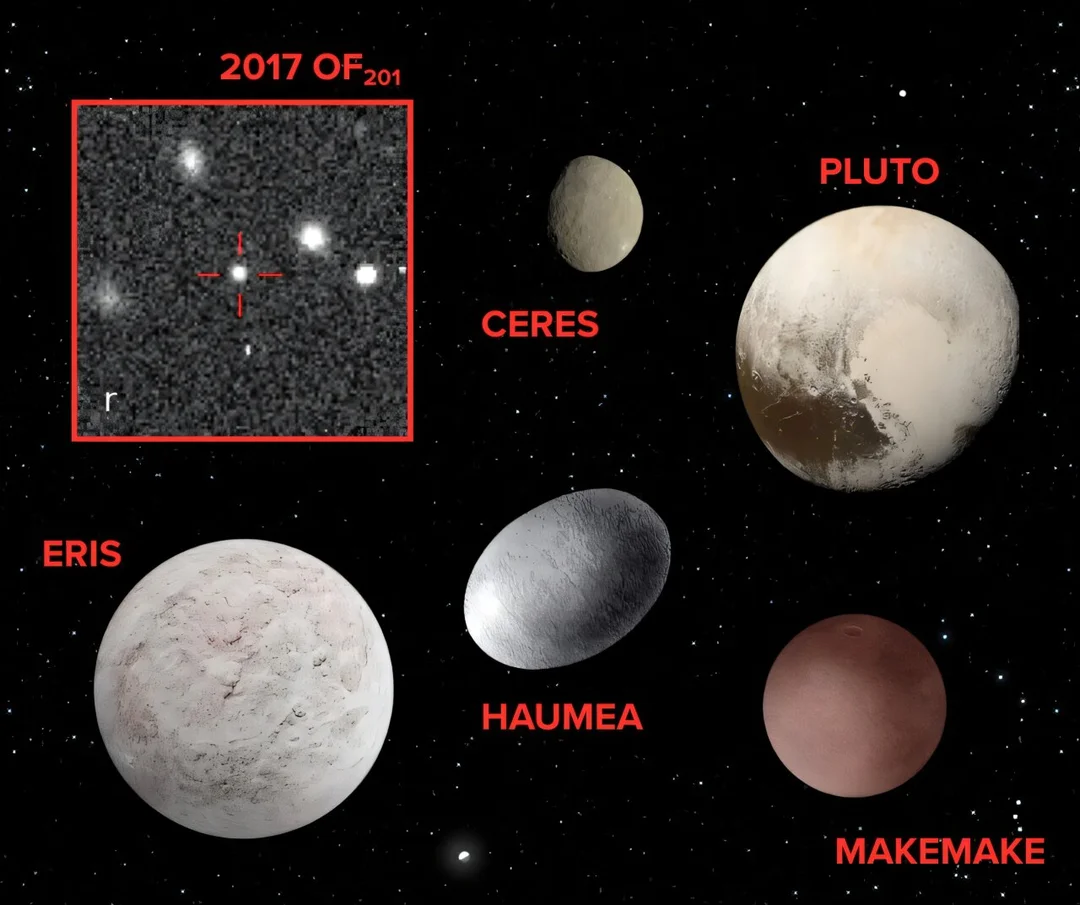
Dwarf Planet Discovery Challenges Planet Nine Theory and Rewrites Solar System History
A newly discovered trans-Neptunian object (TNO), designated 2017 OF201, is shaking up our understanding of the outer Solar System. This potential dwarf planet, announced on May 21, 2025, by the International Astronomical Union, boasts an extremely elongated orbit that challenges the existing theories about the hypothetical Planet Nine and suggests a wealth of undiscovered objects lurking in the deep reaches of space.
Located far beyond Pluto, 2017 OF201 is estimated to be around 700 kilometers (435 miles) in diameter, making it a strong candidate for dwarf planet status. What makes this discovery particularly compelling is its unique orbit which takes approximately 25,000 years to complete.
"The object's aphelion – the farthest point on the orbit from the Sun – is more than 1,600 times that of the Earth's orbit," explained astrophysicist Sihao Cheng of the Institute for Advanced Study. "Meanwhile, its perihelion – the closest point on its orbit to the Sun – is 44.5 times that of the Earth's orbit, similar to Pluto's orbit."

This highly eccentric orbit has significant implications for the ongoing search for Planet Nine, a hypothetical planet believed to be influencing the orbits of other TNOs. The discoverers note that the orbit of 2017 OF201 does not conform to the clustered orbits that have fueled the Planet Nine hypothesis.
Jiaxuan Li from Princeton University, a co-discoverer, explained, "Many extreme TNOs have orbits that appear to cluster in specific orientations, but 2017 OF201 deviates from this."
Simulations conducted by the research team indicate that the presence of Planet Nine would destabilize the orbit of 2017 OF201, potentially ejecting it from the Solar System within 100 million years. This suggests that if Planet Nine exists, its influence on the outer Solar System may be less significant than previously thought.

Adding to the intrigue, the discovery was made using archival data readily accessible to anyone. "All the data we used to identify and characterize this object are archival data that are available to anyone, not only professional astronomers," said Li. "This means that groundbreaking discoveries aren't limited to those with access to the world's largest telescopes. Any researcher, student, or even citizen scientist with the right tools and knowledge could have made this discovery, highlighting the value of sharing scientific resources."
The discovery of 2017 OF201 opens up new avenues for research and reinforces the idea that much of the outer Solar System remains unexplored. Cheng notes that 2017 OF201 is only detectable for 1% of its orbit, suggesting the existence of potentially hundreds of similar objects awaiting discovery.
"Even though advances in telescopes have enabled us to explore distant parts of the Universe, there is still a great deal to discover about our own Solar System," emphasizes Cheng.
Will the discovery of 2017 OF201 finally debunk the Planet Nine theory? Or will it lead to a refined understanding of the outer Solar System's architecture? What other secrets are hidden in the Kuiper Belt and beyond? Share your thoughts and theories in the comments below!